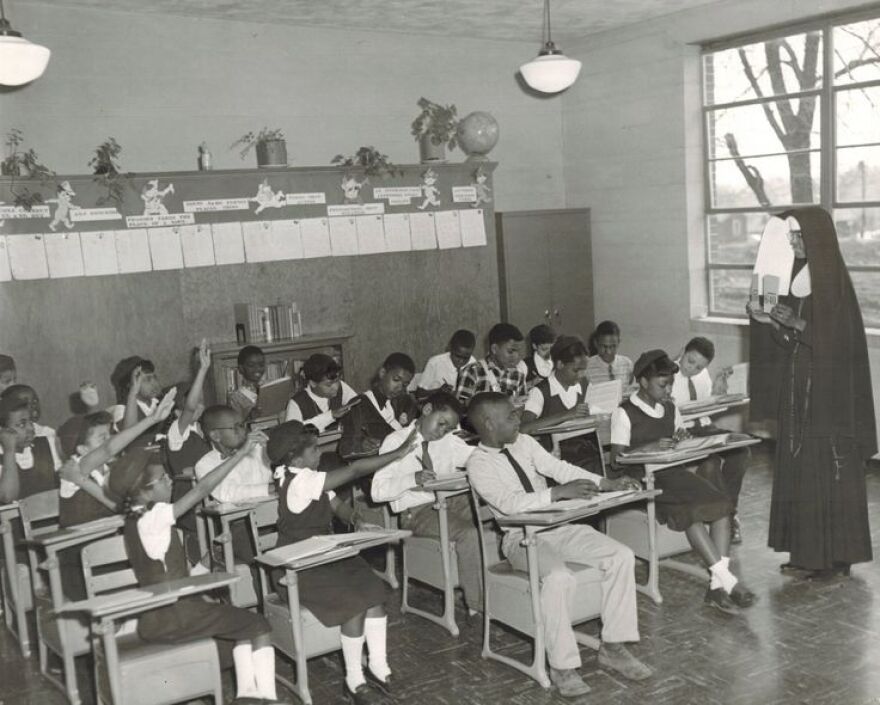Before and after the Emancipation Proclamation, formerly enslaved and free Black people built towns across the nation. A national research project shows that African Americans settled five little-known towns in the St. Louis region, and one of those cities — Kinloch — still exists.
Robertson, Kinloch, North Webster and Meacham Park can be located on the Black Towns & Settlements digital mapping tool created by Cymone Davis and Atyia Martin. The town of Brooklyn in St. Clair County is also on the map.
St. Louis has an interesting group of Black towns that is not really seen elsewhere, said Davis, CEO of Black Towns Municipal Management, a consulting firm that helps redevelop Black townships.
“St. Louis has around four or five in the proximity of one another, and I'm curious to know how did one start versus the other,” she said. “But what I liked the most about St. Louis [is its] economic development and Black-owned businesses.”
The online map pins 80 little-known, unincorporated and incorporated townships across the country that were created by or for Black people. Among them are nearly 30 cities that are still operating. Davis and Martin scoured scholarly documents, government agencies and historical society sites for information about each city. The two will discuss the history of the five regional cities and other towns at 5:30 p.m. Thursday at the Missouri History Museum as a part of their Black Towns & Settlements discovery tour.

The historic Black towns in St. Louis County are unique because they were surrounded by urban epicenters that helped the cities grow, said Martin, executive director of Next Leadership Development, a nonprofit organization in Boston.
The project aims to inform people about nonexistent and existing Black towns and the people who built the communities.
“We were able to share this rich history of resilience and Black communities, both in terms of what we had to endure to start these spaces for ourselves to be safe pre-Emancipation Proclamation,” Martin said.
A number of the towns that were started after Emancipation Proclamation was issued in 1863 were created to build economic power within the Black community and to create safe spaces for Black people to travel, eat, work and entertain during the Jim Crow era of legalized discrimination.
Martin said many of the towns were created by a collaboration of poor and middle-class Black people who had resources of various kinds to help sustain a community over time. Movie theaters, restaurants, bars, schools, churches and other entertainment venues filled the communities. The population of the towns ranged from about a dozen people to about 5,000. However, white mobs destroyed many of them, and others faded because of environmental injustices or economic shifts within the country.
“During that transition from agricultural to industrial, you saw another wave of Black people leaving a number of these towns … to go to the city to get jobs and to support their families,” Martin said. “And then you have this other component that's about environmental and justices, a number of towns because they were unincorporated did not have a lot of the legal protections that incorporated areas would have.”

Martin said Robertson, a Black town in north St. Louis County, dealt with toxic pollution and dumping by manufacturing plants, and many of the residents reported health issues because of radioactive waste in the area. St. Louis officials eventually evicted residents in the unincorporated town to expand St. Louis Lambert International Airport.
“Robertson is already where there are stories of people getting sick and getting cancer, all types of different cancers,” Martin said. “It turns out that there was a company that was driving through their community and dumping radioactive waste … and this is a disregard for human life and taking advantage of policy gaps and lack of legal protections that these towns had.”
Davis and Martin want the digital map to inspire people to start researching forgotten Black cities and preserve those that are still incorporated, like Kinloch, where about 300 people still live.
“The vibrancy of Black townships in the 20th century and the 21st century has declined and scaled,” Davis said. “I think that there's a reason why Black towns are now really popping up more in pop culture, and in conversation, because there is a need for Black towns to be revitalized.”




